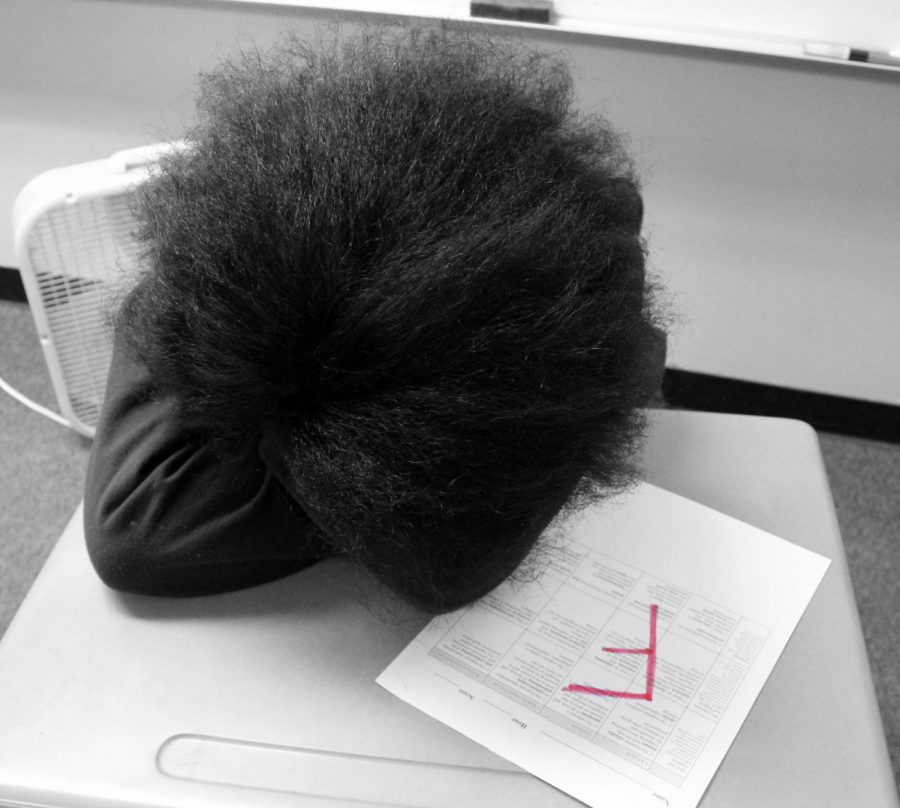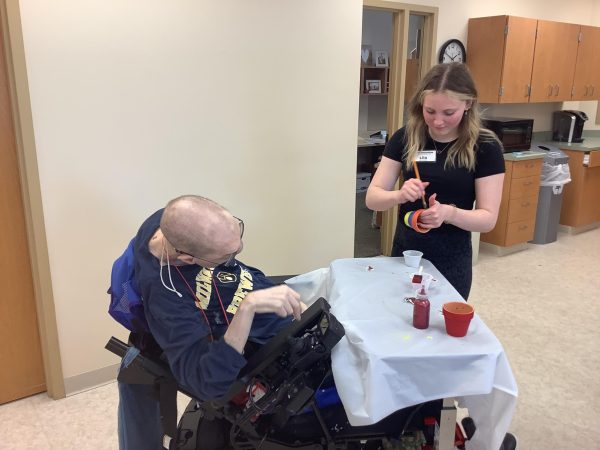Students suffering in silent pain
One in five students is walking around this school with an illness.
Since 1270 students attend this school, that means 254 students suffer from an invisible illness. In a class of 25 students, 5 of them could be in silent pain. Only one out of those 5 students will reach out on their own for help.
This illness is not contagious. It cannot be cured with a shot or a few days’ worth of medication.
The illness?
Lifelong mental illness.
Mental illness includes depression and anxiety, which are the most common, or it can consist of others such as Bipolar, Manic Depressive, Trauma, post-traumatic stress disorder (PTSD), and attention-deficit/hyperactivity disorder (ADHD).
While this illness affects everyday life, teachers rarely know who suffers from it. The students enter class and leave class, only leaving small clues that are often misinterpreted. But since teachers work with students 5 days a week, they are in the best position to make a difference.
It starts with knowing what to look for.
Mental illness can look like many things. Common signs of mental illness include extreme mood changes, changes in school performances, frequent disobedience or aggression, hyperactive behaviors, excessive worrying or anxiety, avoiding friends and social activities, and abuse of substances.
The worst part? Often these behaviors get misinterpreted as misbehavior, which leads to punishments that only add to the pain someone with a lifelong mental illness suffers.
“I think the biggest advice to staff would be to be kind to everyone as we don’t know what is going on in someone’s life, student or staff. We are all carrying things with us throughout our school day so it is important to be kind, empathetic and offer our support,” said Oshkosh North school counselor Kaitlin Stindt.
Teachers should bring an open mind to dealing with student issues in class. If they talk to students first, oftentimes they can find the reason for the behavior.
It is important for teachers to remember that just because a student’s behavior changes doesn’t always mean they are suicidal.
Stindt said that the counselors have tried to better prepare staff for dealing with the invisible illness.
“QPR [question, persuade, and refer] can help staff identify mental health changes in students,” she said.
The number one thing teachers should remember is not to be afraid to ask if the student is ok.
“Asking someone directly about suicidal intent lowers anxiety, opens up communication, and lowers the risk of impulsive act.”
If a student opens up to a teacher, that teacher should take into consideration the child’s mental needs. The student may even have a 504b plan for their illness.
And most importantly, show the student some support and kindness.
Often, teachers tend to back off when they notice a student suffering from a mental illness because they don’t want to push them. That’s not really the way to go.
This by no means requires a teacher to avoid discipline. The discipline should come from an understanding and supportive intention though. It will help them to find a motivation and build rapport.
A current North student who suffers from a mental illness highlighted the need for more support and positivity.
“When you suffer from a mental illness like depression and anxiety, you tend to lose all motivation in life.”
Knowing they are still held accountable for things that will help them find that motivation to succeed because It shows that you believe they can still succeed in life.
Students who come to school every day with a mental illness tend to have some sort of coping mechanism. Sometimes it’s healthy. Other times, it’s not.
Some unhealthy coping mechanisms students may have are substance abuse, aggression towards self and others, and self-harm.
If a teacher notices a student that may have some unhealthy coping mechanisms, the teacher should not hesitate to talk to them privately about it.
Teachers might even offer personal recommendations for healthy ways to cope, such as breathing techniques, writing about their feelings, or talking to someone, such as a counselor or trusted adult. If the student lacks proper health care, the teacher could also inform the students about ways to get in touch with someone in the mental health profession. Talking to a doctor, professionals at school, catalpa health, day treatment programs, a wellness screen, and the Rise Up program are great suggestions to inform the student and guardian about.
Teachers must always remember to be nonjudgmental when it comes to these situations because no matter what, teachers will never know the entire cause of the student’s mental illness.
If teachers pay more attention, and students start letting the people who care about them in, it will greatly reduce–because it can never completely remedy–the pain people with mental illness experience.
1 person every 40 seconds all around the world commits suicide due to a mental illness.
Just because this illness doesn’t have some sort of vaccination doesn’t mean there isn’t anything that will help make it less painful.
Teachers need to take notice before it’s too late. No, teachers should never be or feel blamed if they don’t notice, but it goes a long way in ensuring the health of their students. Teachers who fear confronting a student should seek out a counselor or administrator to help the conversation move forward.
Together, teachers and students can reduce the pain.

Senior, photographer, and editor. I love to hang out with my friends and family and watch Netflix during my free time. I also enjoy playing the violin...











Jack Kese • Dec 9, 2019 at 11:18 am
This well-written article highlights the significance of mental illness in students, and the appropriate actions that teachers should practice in a situation like this. One of the most important things I saw in the article, is when Mrs. Stindt said that you never know what’s going on in a students life, and to never judge. This article definitely made me more aware of what could be happening with the students around me.
PS I found the star
James River Lenza • Dec 9, 2019 at 11:16 am
I’m just making a comment about the star and the post itself. I feel that this post is very important and I appreciate the one who wrote this. As someone who has suffered through mental issues and have seen my friends go through issues as well, I’ve noticed the need for teacher’s support. I hope that teachers will eventually go in the right direction when it comes to helping students – because honestly – they often go in the wrong direction and only worsen situations. We need more care from teachers and for teachers to learn how to properly address mental issues. I think that teachers should go through training for this, I know some teachers do but it doesn’t seem to be enough. Teachers need to know how to deal with suffering kids.